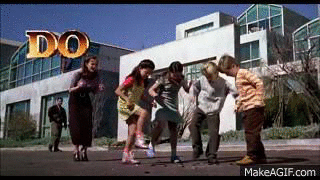Because the movie originated from an unrelated script, with names and superficial details from the novel being added retroactively, there are many significant differences between the original book and the film. While the original novel has been accused of promoting militarism, fascism and military rule, the film satirizes these concepts by featuring grandiose displays of nationalism as well as news reports that are intensely fascist, xenophobic, and propagandistic. Verhoeven stated in 1997 that the first scene of the film?an advertisement for the Mobile Infantry?was adapted shot-for-shot from a scene in Leni Riefenstahl?s Triumph of the Will (1935), specifically an outdoor rally for the Reichsarbeitsdienst. Other references to Nazism in the movie include the Nazi German-esque uniforms and insignia of field grade officers, M.I. undress working uniforms reminiscent of Mussolini's Blackshirts, Albert Speer-style architecture and propagandistic dialogue ("Violence is the supreme authority!").
In a 2014 interview on The Adam Carolla Show, actor Michael Ironside, who read the book as a youth, said he asked Verhoeven, who grew up in Nazi-occupied Netherlands, "Why are you doing a right-wing fascist movie?" Verhoeven replied, "If I tell the world that a right-wing, fascist way of doing things doesn't work, no one will listen to me. So I'm going to make a perfect fascist world: everyone is beautiful, everything is shiny, everything has big guns and fancy ships, but it's only good for killing fucking bugs!"
Likewise, the powered armor technology that is central to the book is completely absent in the movie. According to Verhoeven, this?and the fascist tone of the book?reflected his own experience in Nazi-occupied Netherlands during World War II.

